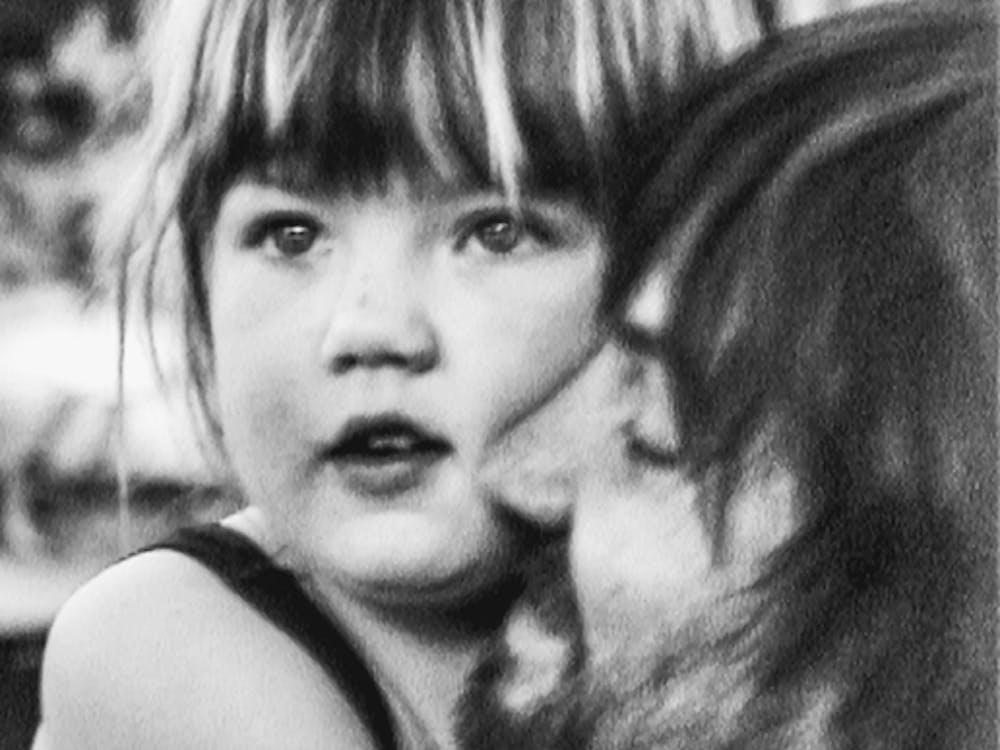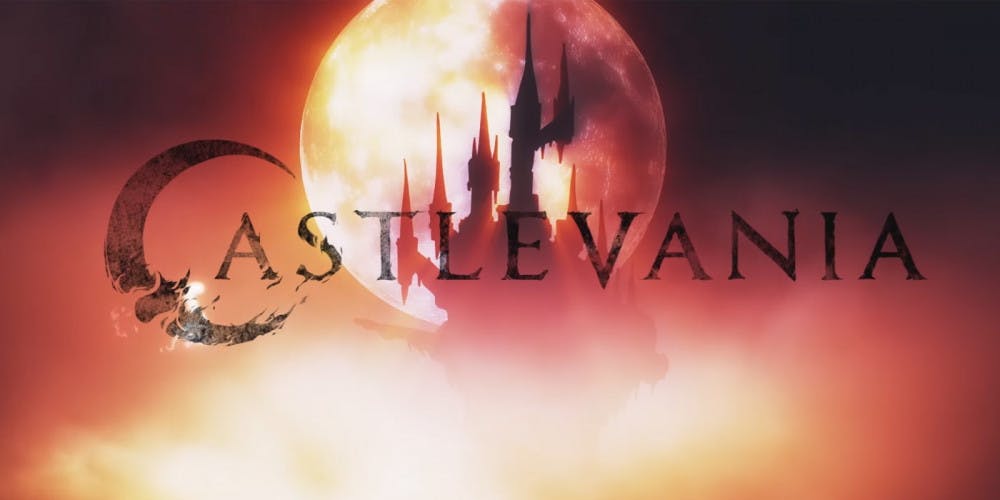by Emily Reuben Japan’s Castlevania game series was once a must-own title for gamers willing to test their vampire killing abilities. Known for its relatively difficult gameplay, Castlevania is a nostalgic name for those who grew up with the NES and SNES systems, sparking memories of dark, gothic environments, whip-wielding heroes, and annoying Medusa heads. While a nostalgic title, the series has continued since the days of early Nintendo side-scrollers to feature more open-world, RPG-esque styles of gameplay which make most critics pine for the retro days of yore. When fans heard about an animated adaption of the once-beloved game series, many hoped it could compel the series to rise from its coffin of nostalgic obscurity.
Step into the shadows of the hell house
Netflix’s Castlevania shares it’s name with the first entry title of the Castlevania series, however is primarily based around the third entry in the game series, Castlevania III: Dracula’s Curse with some additions to plot and nods to more recent titles in the series. Castlevania starts off in the fictional country of Wallachia, in the year 1455. A woman, Lisa from Lupu, decides to seek out the knowledge of Vlad Dracula Tepes and becomes his wife. After their home is raided by the church, Lisa is burned at the stake as a witch, the clergy labeling her scientific equipment as “Devil’s machines”. Enraged at his wife’s murder, Dracula gives the clergy one year to repent as he builds a hellish army. The show then turns its focus to Trevor Belmont, the last surviving son of his family, as he continues his family’s work of destroying creatures of the night that are terrorizing the walled city of Gresit.
The additions made to Castlevania’s plot were definitely needed in order to make a mini-series. While the game is able to convey the majority of this plot in a few short title sequences, it is simplistic and focused more on gameplay than storytelling. Castlevania manages to keep the story intact for fans of the game while making it more coherent and enjoyable for those unfamiliar with the game series. The most interesting change is the role of the church. While the overarching villain of the series is Dracula, he is shown in a more sympathetic light than in the games. It can be argued that in this first season the church is the true villain of the show. The show offers an interesting take on religion and indoctrination that is not often explored in the animated genre.
Overall, the plot is easy to follow and should be entertaining enough for just about anyone. The ideas concerning a corrupt religious government is an interesting notion, especially considering that Dracula is also an entity in this world. Between the church and Dracula, Castlevania urges you to think twice on which is the lesser of two insidious evils.
Castlevania starts off in the fictional country of Wallachia, in the year 1455. A woman, Lisa from Lupu, decides to seek out the knowledge of Vlad Dracula Tepes and becomes his wife. After their home is raided by the church, Lisa is burned at the stake as a witch, the clergy labeling her scientific equipment as “Devil’s machines”. Enraged at his wife’s murder, Dracula gives the clergy one year to repent as he builds a hellish army. The show then turns its focus to Trevor Belmont, the last surviving son of his family, as he continues his family’s work of destroying creatures of the night that are terrorizing the walled city of Gresit.
The additions made to Castlevania’s plot were definitely needed in order to make a mini-series. While the game is able to convey the majority of this plot in a few short title sequences, it is simplistic and focused more on gameplay than storytelling. Castlevania manages to keep the story intact for fans of the game while making it more coherent and enjoyable for those unfamiliar with the game series. The most interesting change is the role of the church. While the overarching villain of the series is Dracula, he is shown in a more sympathetic light than in the games. It can be argued that in this first season the church is the true villain of the show. The show offers an interesting take on religion and indoctrination that is not often explored in the animated genre.
Overall, the plot is easy to follow and should be entertaining enough for just about anyone. The ideas concerning a corrupt religious government is an interesting notion, especially considering that Dracula is also an entity in this world. Between the church and Dracula, Castlevania urges you to think twice on which is the lesser of two insidious evils.
Visuals sharp as the crack of a whip
 The best part about Castlevania’s animation is hands down the gruesome imagery. Eyeballs are ripped from their sockets; babies are stolen by hideous Hell monsters; limbs go flying; the list goes on. Castlevania does not shy away from gross and gory animation, which makes this show a delight for horror fans. Considering this is a world in which blood-sucking monsters are prevalent, the grim reality of Castlevania’s world is made abundantly clear to viewers and emphasized in these unfortunate situations. When the viewer is able to see these terrible things unfolding onscreen, the stakes seem much higher than if they had been censored or made more “family friendly”.
On the whole, Castlevania looks great; the characters have interesting designs, and the world holds an eerie, gothic tone in almost every shot. The animators did a great job with the often intense lighting. More often than not, the most impressive bits of animation are due to the spectacular character and environmental lighting and can make even a still close-up pleasing to the eye.
While at first glance the character designs and all around gothic style are promising, Castlevania is not exactly an animated marvel. Typically the foreground of the frame holds the most action. This is not necessarily uncommon in animation or filmmaking as a whole, however, this is strange in Castlevania due to the lack of movement in the background. For example, Trevor Belmont may be engaging with another notable character, waving his arms angrily or cracking his whip in an aesthetically pleasing way, but characters in the background are frozen in time, staring silently ahead. Instead of reacting to the action in front of them, these background characters feel more dead than alive and really drag down the overall quality of the animation. Yes, animation is an expensive medium, so it is not unreasonable to have some frames containing slightly blurred, motionless background characters. However when the shot remains unchanging for more than a few seconds it becomes increasingly uncomfortable to see lifeless sacks of flesh zoning out behind the main cast, disrupting the animatic flow within the frame.
On a similar note, there is some inconsistency regarding the scope of Castlevania’s animated world due to the lack of attention to the background. The town of Gresit feels nearly empty in many shots, with only a few scattered villagers here and there. A notable scene involves the villagers forming a mob and pursuing Trevor with one shot showing a huge number of villagers posing a threat, but in the very next shot there are only three or four. This inconsistency makes Trevor’s plight seems like an easily solved problem; the man fights vampires, so he can probably take on three normal humans.
The best part about Castlevania’s animation is hands down the gruesome imagery. Eyeballs are ripped from their sockets; babies are stolen by hideous Hell monsters; limbs go flying; the list goes on. Castlevania does not shy away from gross and gory animation, which makes this show a delight for horror fans. Considering this is a world in which blood-sucking monsters are prevalent, the grim reality of Castlevania’s world is made abundantly clear to viewers and emphasized in these unfortunate situations. When the viewer is able to see these terrible things unfolding onscreen, the stakes seem much higher than if they had been censored or made more “family friendly”.
On the whole, Castlevania looks great; the characters have interesting designs, and the world holds an eerie, gothic tone in almost every shot. The animators did a great job with the often intense lighting. More often than not, the most impressive bits of animation are due to the spectacular character and environmental lighting and can make even a still close-up pleasing to the eye.
While at first glance the character designs and all around gothic style are promising, Castlevania is not exactly an animated marvel. Typically the foreground of the frame holds the most action. This is not necessarily uncommon in animation or filmmaking as a whole, however, this is strange in Castlevania due to the lack of movement in the background. For example, Trevor Belmont may be engaging with another notable character, waving his arms angrily or cracking his whip in an aesthetically pleasing way, but characters in the background are frozen in time, staring silently ahead. Instead of reacting to the action in front of them, these background characters feel more dead than alive and really drag down the overall quality of the animation. Yes, animation is an expensive medium, so it is not unreasonable to have some frames containing slightly blurred, motionless background characters. However when the shot remains unchanging for more than a few seconds it becomes increasingly uncomfortable to see lifeless sacks of flesh zoning out behind the main cast, disrupting the animatic flow within the frame.
On a similar note, there is some inconsistency regarding the scope of Castlevania’s animated world due to the lack of attention to the background. The town of Gresit feels nearly empty in many shots, with only a few scattered villagers here and there. A notable scene involves the villagers forming a mob and pursuing Trevor with one shot showing a huge number of villagers posing a threat, but in the very next shot there are only three or four. This inconsistency makes Trevor’s plight seems like an easily solved problem; the man fights vampires, so he can probably take on three normal humans.  Animation flourishes when there is great attention to detail. Shows like Avatar: The Last Airbender and Gravity Falls make sure to include minute details to keep the viewer engaged. Often, more can be discovered in these shows by looking at the background and the smaller details hidden behind the focal point of a shot. This is something that Castlevania ultimately lacks and could definitely benefit from in future seasons. While Castlevania’s animated style and tone are quite pleasing, more attention to polishing the movements and reactions in the entire frame would be much appreciated.
Animation flourishes when there is great attention to detail. Shows like Avatar: The Last Airbender and Gravity Falls make sure to include minute details to keep the viewer engaged. Often, more can be discovered in these shows by looking at the background and the smaller details hidden behind the focal point of a shot. This is something that Castlevania ultimately lacks and could definitely benefit from in future seasons. While Castlevania’s animated style and tone are quite pleasing, more attention to polishing the movements and reactions in the entire frame would be much appreciated.



















